Belfast? – Linenopolis!
#DestinationScotland
John Bradbury reprised his Tour Guide role at 2pm as we set off on my second walking tour of Belfast City Centre. There was some crossover in the footprint of the walk but I didn’t mind that as the content was completely different, and delivered so well. Now we were not focussing on the Blue Plaques, but on the whole buildings, their origins and even the etymology of the city’s name!
Belfast was founded at a sandy ford across the River Farset, and this is the origin of the city’s name – Béal Feirste, the “river mouth at the sandbar.” The river’s name ‘Farset’ is derived from the Irish word for “sandbar.” The river flowed right past the docks on the High Street as Belfast grew in the 19th century, but was subsequently culverted
John Bradbury explained how the linen trade played a pivotal role in the social and economic development of Belfast. The manufacture of linen was the catalyst that allowed it and the surrounding towns to grow into the region’s pre-eminent city during the 1860s – by the end of the 19th century Belfast was the linen capital of the world.
Due to the American Civil War, 1861 – 1865, there was a global shortage of cotton, which caused a demand for alternative fabrics. One of Ireland’s most significant industries at that time was the manufacture of linen goods. The incredible impact that linen had in the city can still be seen to this day. Many buildings around The Linen Hall Library reflect the city’s past as a global industrial hub of the 19th and early 20th century. Almost every one in the centre had some role to play directly or indirectly in the manufacture of linen, hence the nickname ‘Linenopolis’!
Unfortunately I did not take extensive notes during the afternoon, but here are a few of my photos, and some text gleaned from the world wide web.
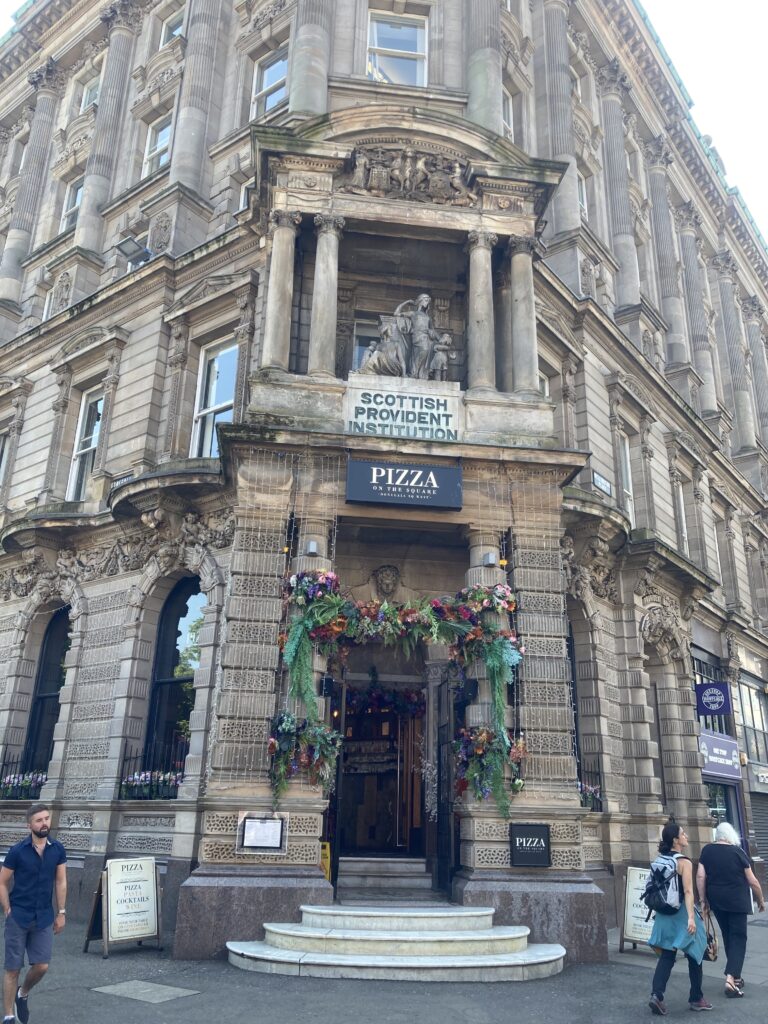
A six-storey building at 1-11 Donegall Square West with basement and attic-storey, designed by Young & Mackenzie Architects for The Scottish Provident Institution. Built by Robert Corry in two phases between 1897 and 1902. It is a fine example of late Victorian Baroque revival architecture. It features Giffnock sandstone, rusticated granite pilasters, octagonal towers with fish scale roof and detail panels that portray the major industries of Belfast at the end of Queen Victoria’s reign; shipbuilding, linen, printing, ropemaking.
The Scottish Provident Institution housed purpose built office units, workshops and retail outlets, much needed by the booming linen trade.
It replaced a former linen warehouses and the Donegall Hotel which were originally on the site.
edited from futurebelfast.com & drtomstours.com
Yet another six storey building, this time designed by Young & Mackenzie Architects was the warehouse for Royal Irish Linen. Built 1886 – 88 by H & J Martin with ogee copper domes and carvings of Donatello style cherubs by Harry Helms of Exeter.
The building was later occupied by Robinson & Cleaver’s Department Store and the ground floor hosted a “nobly proportioned and exceedingly beautiful staircase of white Sicilian marble” with statues of Erin and Britannia at its base. There were also 50 stone heads of the firm’s patrons including Queen Victoria, the Emperor and Empress of Germany, Lady Dufferin and General Washington, plus symbolic references to overseas marketplaces. The Victorian building was finished in 1888.
The store was renowned for being particular about its staff, ensuring personal service and discretion. Robinson & Cleaver prided itself for being the most famous store in the world for Irish Linens trading for almost a century, until 1984.
sources: futurebelfast.com, belfastlive.co.uk

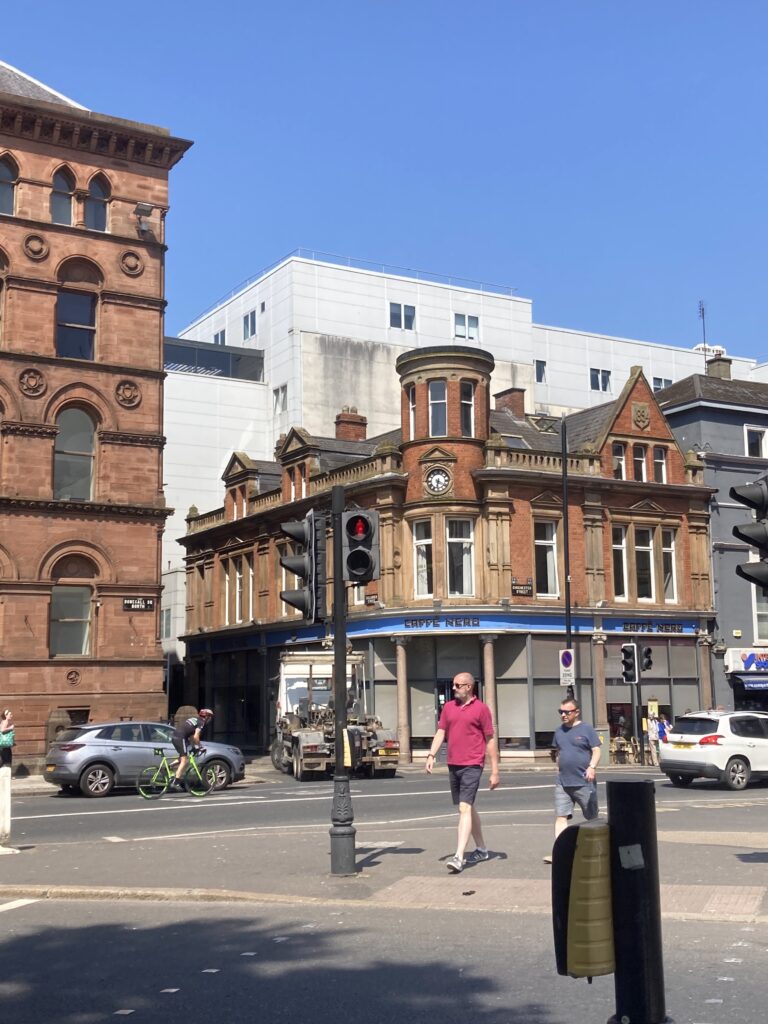
A small building, at the corner of Chichester Street and Callender Street, built in 1894 to s design by Samuel Stevenson. For many years occupied by Payne, Reuben & Ireland Ltd., merchant and ladies’ tailors. Reputedly the first building in Belfast lit by electricity.
Clarence House, Belfast. Occupying 4-10 May Street, Belfast, was constructed 1865-67 to a design by Lanyon, Lynn and Lanyon.

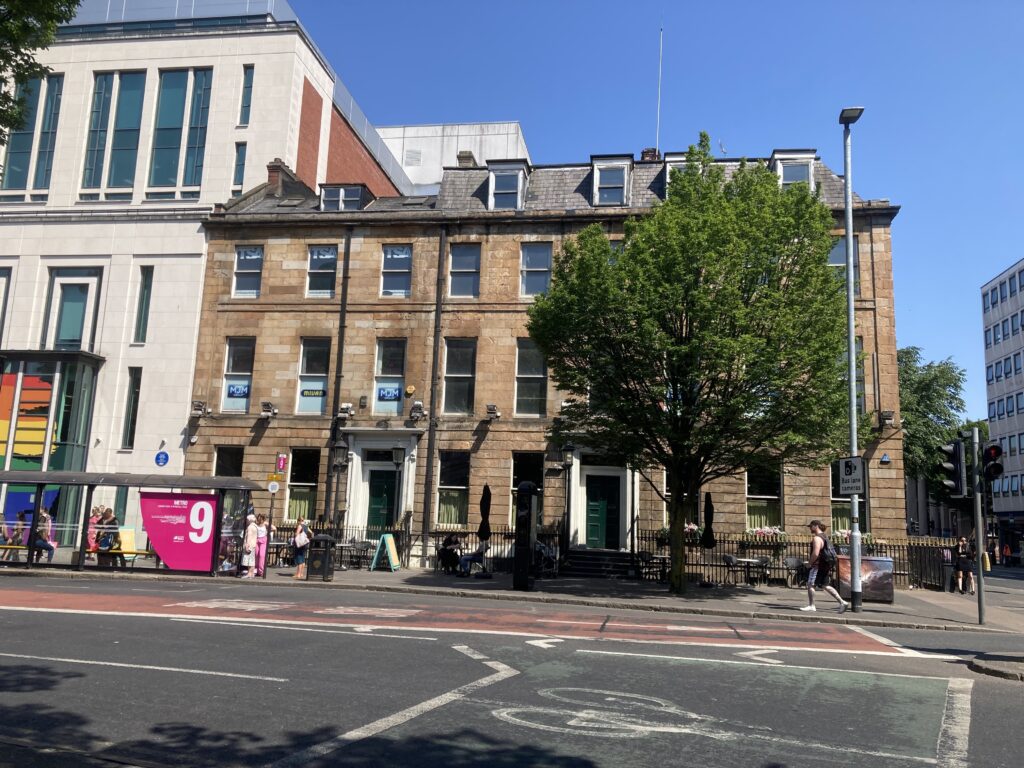
This three-storey terrace, with basements, built c1830 for residential use and converted to commercial premises later in the 19th century, known as the ‘Shipmaker’s House, now known as Clarence Chambers
No. 18 was B1 listed in 1986. The property was occupied as a private residence from construction (c1830) until conversion to commercial premises c1870. It was then occupied by Alexander Patterson & Co. until c1890 when the building was acquired by the Young Women’s Christian Association (YWCA). Architect James Philips and J. Lowry & Son contractors reconstructed the building at a cost of £1,345, to provide a meeting cum lecture hall for the YWCA. The hall was located on the first floor and is reported to have provided capacity for up to 300 people. The YWCA continued to occupy the premises until the mid-20th century.
No. 19 was also B1 listed in 1986. Built c1830 and in use as private residence until conversion to a hotel in 1880 (The Union Hotel). The hotel operated until 1892 when the business closed and the property was acquired by the Young Men’s Christian Association (YMCA).
In 1888 Queen Victoria granted Belfast the status of ‘city’ and it was agreed that a grand and magnificent building was required to reflect this new ranking.
City Hall opened its doors on the first of August 1906, at a time of unprecedented prosperity and industrial might. The new City Hall was designed by Alfred Brumwell Thomas in the Baroque Revival style and constructed in Portland stone.
The statue of Queen Victoria which stands a full 11 feet high was created by the sculptor Sir Thomas Brock in Sicilian marble to celebrate the Queen’s in 1897. Her statue was unveiled by her son, King Edward VII in 1903. Carved from This memorial is accompanied on each side by life size bronze figures representing spinning and shipbuilding.
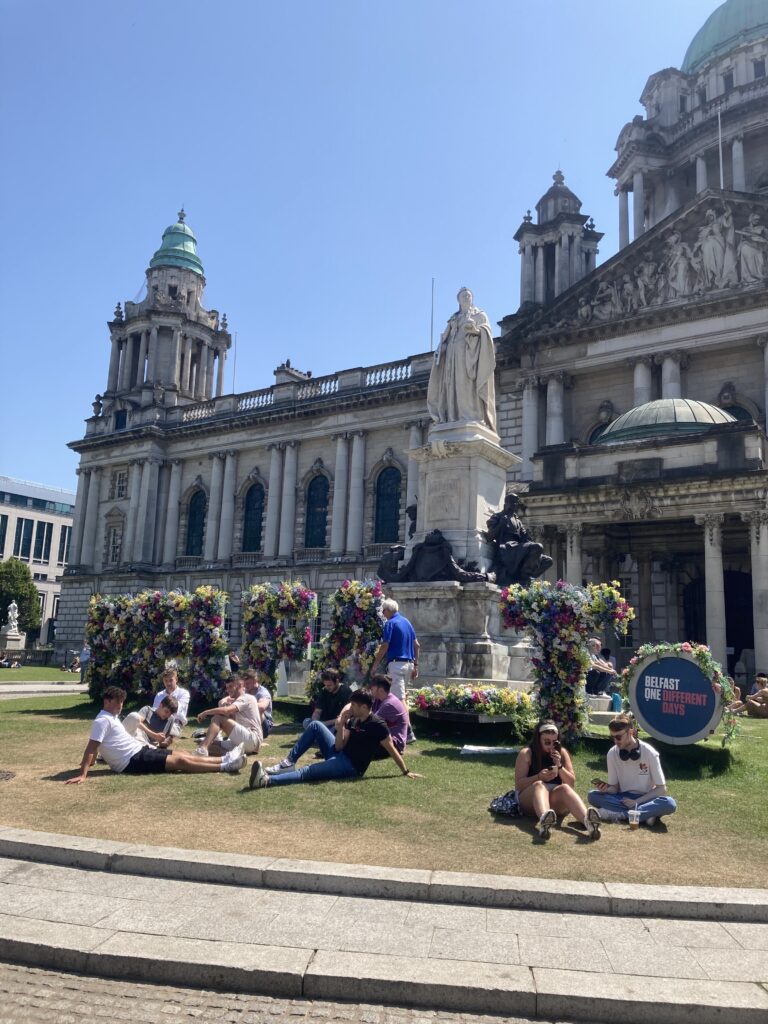
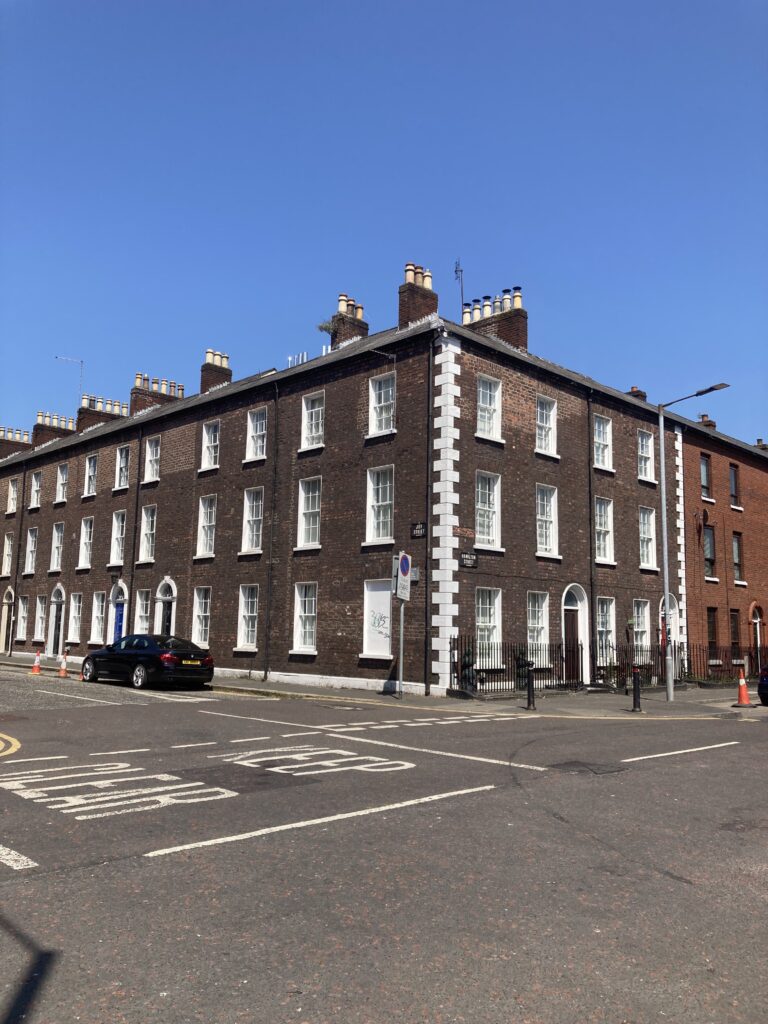
My guide drew my attention to this row of houses on Joy Street.
Rapidly expanding cities need entertainment for the people who have left their traditional country homes and are carving out a new style of life. This beautiful row of Georgian townhouses is where the actor and performer Charlie Chaplin is believed to have stayed during his time in Belfast … behind the blue door, No. 24 Joy Street.
When he was a child, Chaplin performed at Belfast’s Empire Theatre in 1900 as part of ‘The Lancashire Lads’ clog-dancing troupe on November 26, he toured with them for two years. At sixteen he played again at the Empire on January 21, 1907, in a production called Casey’s Circus. And at age nineteen, on April 27, 1908 he performed at the Palace of Varieties (the name for the citie’s Grand Opera House between 1904-1909) in Belfast with the Fred Karno Company, in a sketch called The Football Match.
As a memento of Charlie’s residence in the street, the architectural firm Hamilton’s erected a small statue of the actor outside their premises in Joy Street. I would only have seen this on a guided walking tour of the city!
Thanks to John Bradbury, the Grand Opera House et al for detail.
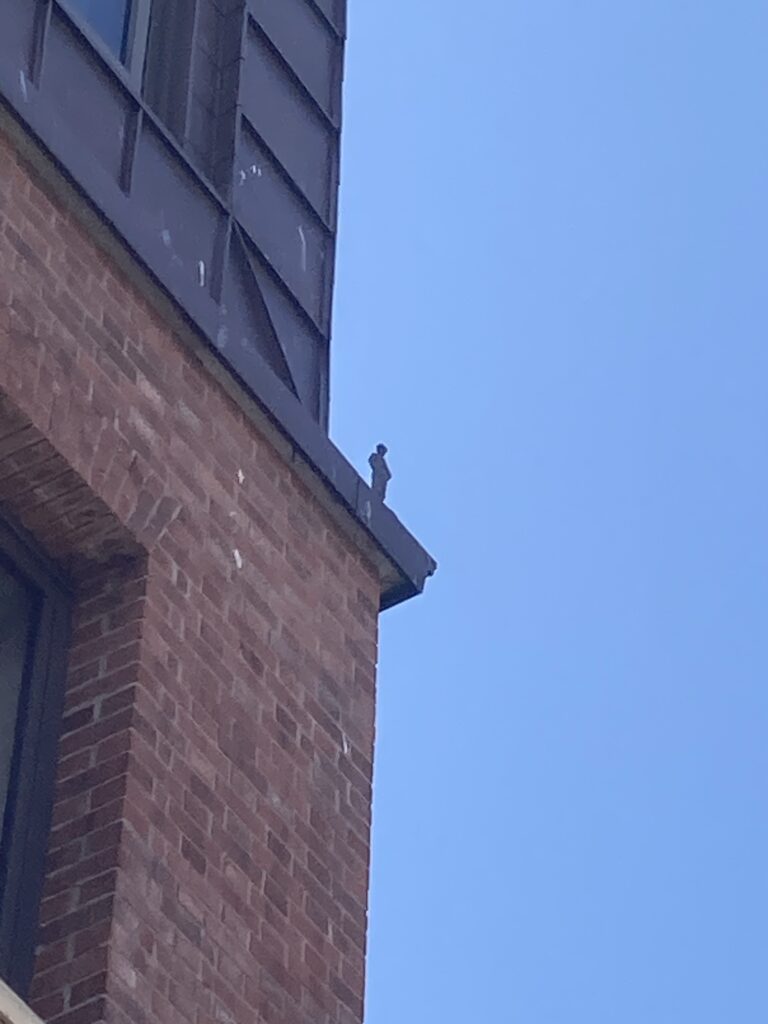
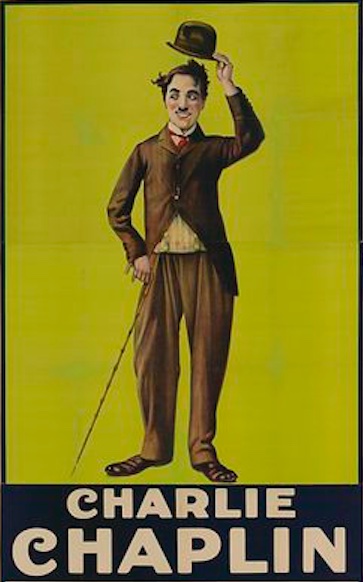
Leave a Reply